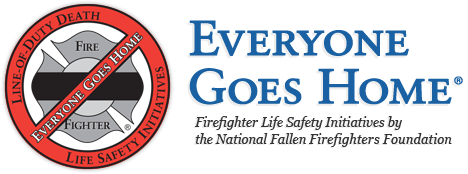Everything we want and need to manage our daily lives – from appointments and contacts to games and movies – is on our phones or tablets. All of it is available and ready to use with the swipe of a finger. It’s fast, easy and helps us feel safe and in control.
Imagine if every call and incident could be managed in a similar way; if everything we needed to coordinate a scene – from tracking units responding and personnel engaged to time spent on tasks and maps of the area – were all on one device.
Would it be easy to use and could it improve firefighter safety and health? As the general public becomes increasingly technologically savvy, can the fire service also put these tools to use?
The National Fallen Firefighters Foundation wanted to get a better picture of how technologies are being used by command officers to support incident command communications, processes and decision-making functions. With the assistance of Crandell Research Solutions, the NFFF convened the Incident Command Operations and Accountability Conference in Monterey, California.
Thirty-three commanding officers attended the two-day conference. Based on self-reports, the participants held between 10 and 40 years in the fire service. Their current ranks included company officers (7 of 33), chief officers (24 of 33) and fire chiefs (2 of 33). Department membership ranges in size from 24 to 10,000 and are staffed by career (26 of 33) or a combination of career and volunteer (7 of 33). They serve populations ranging from 5,000 to 8 million.
Surveys were administered prior to and during the conference to assess familiarity with emerging technologies and the usefulness of Tablet Command Software. Of the 33 attendees, 29 completed all the tasks from the pre-conference survey to the fireground simulations and post scenario surveys.
Of the 31 survey respondents, 21 reported themselves as intermediate to advanced technology users and four participants consider themselves being a source of technology support for their friends. Six reported themselves as less than intermediate.
Participants were asked how frequently they actually use mobile or tablet software for Incident Command or Personnel Accountability. The majority (20 of 31) said they never use the technology, four said they rarely used it, while five respondents said always, and two said either sometimes or most of the time.
What became clear to the NFFF during the conference is the broad range of user ability and availability of these technologies. Also, there are many obstacles to integrating standard technologies for many fire departments.
“The group discussions indicated there are many obstacles to integrating standard technologies for many fire departments,” explained Chief Ron Siarnicki, executive director of the NFFF. “One of the most common may be from the fire department’s perception, the IT departments within a fire department or government agencies are generally overworked. They simply don’t have the time and resources to focus on researching or funding advanced technologies that support firefighter safety and health.”
Overall, the group held a positive opinion about using technology to manage emergency responses, with 26 of 31 either agreed or strongly agreed with the statement, “Technology can improve safety on the fireground.” Nearly all agreed mobile technology, such as tablets, could be useful for specific tasks, including incident command, personnel accountability and tracking, time tracking and time stamping, mapping, benchmarks and checklists.
Furthermore all of the participants felt that technology would be useful and practical for solving problems on the scene. But many of the respondents noted that lack of training is a significant barrier to implementing mobile technology.
Resistance to change and rapidly changing technology may also be a challenge to widespread adoption of tablet software for some firefighters and departments. But all of these concerns could likely be resolved with some practice.
“It does not make any sense for an Incident Commander, who has a modern cell phone in his or her pocket, to have an old fashioned paper tactical work sheet on their clip board,” said Chief Alan Brunacini, former Chief of Phoenix, who participated in the meeting.
Testing the Technology
The attendees took part in three coached incident simulations using Tablet Command Software to account for a variety of command functions including number of units responding to an incident, accountability of assigned tasks, location, supervision and time and duration of assignment. They were asked to rate their performance after each simulation to help determine if the software improved or enhanced their effectiveness.
Through the guided training, the participants overall felt their performance improved and was enhanced on the tasks including using maps, time stamping tasks of units and accounting for personnel.
The majority of those who responded (22 of 26) agreed or strongly agreed that the software is functional enough to be useful on the fireground. They agreed or strongly agreed that frequent repetition of the functional tasks in the software make it easier to navigate and use. Likewise, there was agreement (25 of 26) that the amount of training needed for the software is worthwhile because of its usefulness.
Twenty-three of 26 participants agreed or strongly agreed with the statement, “Using this type of software (Tablet Command) would allow me to perform at an enhanced level compared to my current methods of tracking Location, Function, Supervision and Timing of crews at structure fires.” Only two of 26 were neutral in response to the statement, while one participant disagreed with the statement.
The majority (26 of 27 participants) agreed or strongly agreed with the statement, “Frequent repetition of functional tasks (assigning units, using checklists, creating Sectors, Divisions, and Groups) in this software makes it increasingly easier to navigate and use.” Just one person selected “Neutral” in response to the question.
Slightly more than half (16 of 26) believe their departments could implement this type of software within the next one or two years while the rest believed there was some chance. But the likelihood is unknown, considering the IT challenges many departments face.
The Next Steps
When asked for input about next steps or phases, the respondents indicated that further research is needed to determine effectiveness of technologies to support the numerous command functions including accountability, time tracking and checklists. Likewise, more research is necessary to determine effective training methods to ensure efficient software usage.
“We see these results as an opportunity to expand on the summit involving more technologies and technology companies and involve decision makers which may be IT folks in addition to fire chiefs,” Siarnicki noted. “We also want to address the broader uses of technology to further enhance firefighter safety and encourage departments and agencies to make this a priority.”
For more information or to read the complete results of the survey, download the report.



